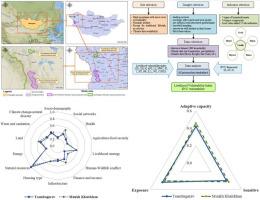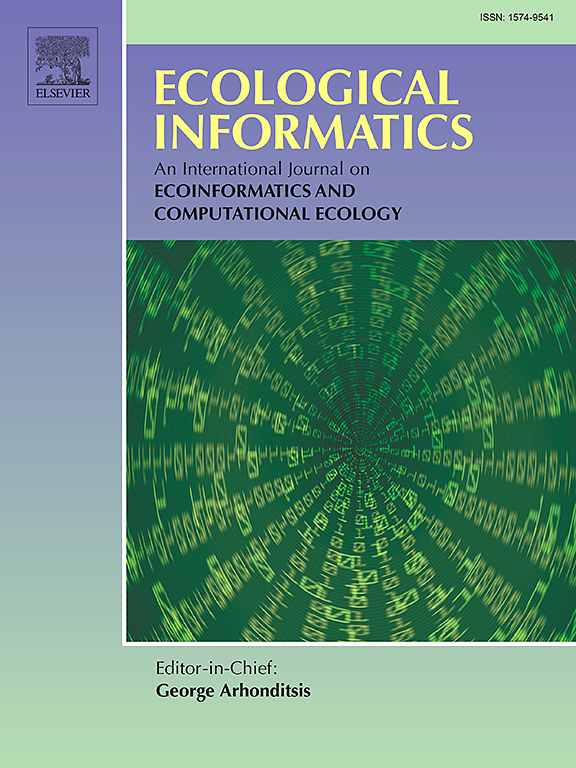第三极地区游牧民生计易受气候变化影响的评估:蒙古西部阿尔泰山案例研究
IF 5.8
2区 环境科学与生态学
Q1 ECOLOGY
引用次数: 0
摘要
亚洲高山通常被称为 "第三极",因为它们是仅次于南北两极的第三大水源储备地,是世界上重要的地貌景观。蒙古西部是 "第三极 "东北部的一部分,以高山峻岭和河流集水区为特征。这些高山上的生态系统,包括居住在其中的游牧民族,都十分脆弱,很容易受到环境变化的影响。在这项研究中,我们对 Tsambagarav (TsGM) 和 Munkhkhairkhan (MKhM) 山区的游牧民进行了家庭访谈,并采用可持续生计方法评估了游牧民的生计脆弱性指数 (LVI)。结果显示,TsGM 的总体生计脆弱性指数为 0.41,MKhM 为 0.44,相应的政府间气候变化专门委员会生计脆弱性指数 TsGM 为 0.01,MKhM 为 -0.02。根据研究结果,我们建议决策者关注以下几个关键领域:有效管理牧场;实施可持续产量政策;建立基于保险的赔偿制度、灾后通信系统和移动经济信息预警系统;降低贷款利率。在这些建议中,开发移动经济信息预警系统是减轻气候变化灾害的一个创新想法。这些行动有助于在瞬息万变的气候中实现长期可持续的生计。本文章由计算机程序翻译,如有差异,请以英文原文为准。

Assessment of nomadic pastoralists' livelihood vulnerability to the changing climate in the Third Pole region: Case study in the Altai Mountains of western Mongolia
The High Mountains of Asia, often called the “Third Pole” because they constitute the third largest reserve of water after the North and South Poles, are an important landscape worldwide. Western Mongolia forms part of the northeastern extent of the Third Pole, characterized by high mountain ranges and river catchment areas. The ecosystems in these high mountains, including the nomads that inhabit them, are fragile and vulnerable to environmental changes. In this study, we conducted household interviews with nomads in the Tsambagarav (TsGM) and the Munkhkhairkhan (MKhM) Mountains and, used a sustainable livelihood approach to assess the livelihood vulnerability index (LVI) of the nomads. The results showed that the overall LVI was 0.41 for TsGM and 0.44 for MKhM, with corresponding Intergovernmental Panel on Climate Change-LVI of 0.01 for TsGM and − 0.02 for MKhM. Based on the findings, we recommend that decision-makers should focus on several key areas: effectively managing pasture land; implementing policies for sustainable yields; establishing an insurance-based compensation system, post-disaster communication system; and a mobile-economy informative early warning system; and lowering the loan interest rate. Among recommendations, developing a mobile-economy informative early warning system is an innovative idea to mitigate climate change disasters. These actions can contribute to a long-term sustainable livelihood in the fast-changing climate.
求助全文
通过发布文献求助,成功后即可免费获取论文全文。
去求助
来源期刊

Ecological Informatics
环境科学-生态学
CiteScore
8.30
自引率
11.80%
发文量
346
审稿时长
46 days
期刊介绍:
The journal Ecological Informatics is devoted to the publication of high quality, peer-reviewed articles on all aspects of computational ecology, data science and biogeography. The scope of the journal takes into account the data-intensive nature of ecology, the growing capacity of information technology to access, harness and leverage complex data as well as the critical need for informing sustainable management in view of global environmental and climate change.
The nature of the journal is interdisciplinary at the crossover between ecology and informatics. It focuses on novel concepts and techniques for image- and genome-based monitoring and interpretation, sensor- and multimedia-based data acquisition, internet-based data archiving and sharing, data assimilation, modelling and prediction of ecological data.
 求助内容:
求助内容: 应助结果提醒方式:
应助结果提醒方式:


